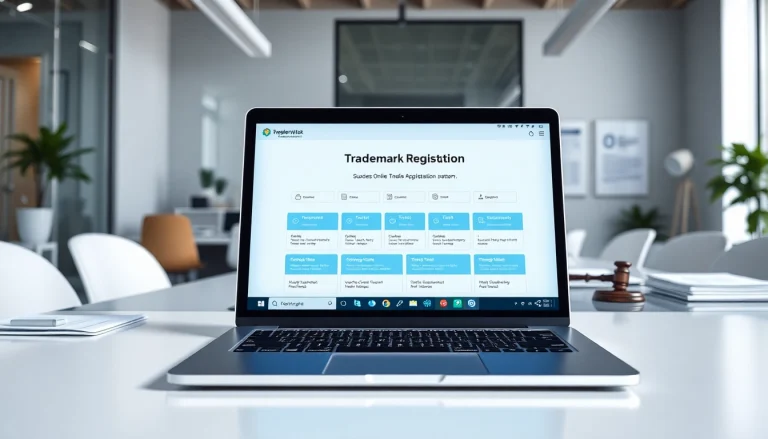Understanding Telephone Data Collection
Telephone data collection is a critical component of contemporary research methodologies, offering a structured approach to gathering valuable information. Whether it is for market research, public opinion polling, or qualitative insights, telephone data collection employs various techniques to ensure that diverse perspectives are captured effectively. This article aims to explore the nuances of telephone data collection, equipping researchers and organizations with the knowledge needed to harness its full potential.
What is Telephone Data Collection?
Telephone data collection refers to the process of gathering information through telephone calls. This method may involve telephonic interviews, surveys, or questionnaires administered by trained interviewers. It offers a versatile and efficient means of reaching respondents across varied demographics and geographical locations without the need for physical presence.
Traditionally, data collection methodologies required face-to-face interactions, which could be time-consuming and limiting. However, telephone data collection has streamlined these processes, allowing for prompt gathering of responses and quick analysis of results. The technique can encompass qualitative and quantitative data, making it a well-rounded choice for researchers.
Types of Telephone Data Collection Methods
Different methods of telephone data collection cater to various research needs. Here are the primary types:
- Telephone Interviews: Direct conversations conducted between the interviewer and respondent, allowing for in-depth exploration of topics. These can be structured, semi-structured, or unstructured, depending on the research objectives.
- Telephone Surveys: Utilizes standardized questionnaires administered over the phone, often employing systems such as Computer-Assisted Telephone Interviewing (CATI) for efficiency and accuracy.
- Focus Groups via Telephone: A moderated discussion with several participants conducted over a conference call, facilitating interaction among respondents.
- Automated Surveys: Pre-recorded messages prompting respondents to select answers using their phone keypads, commonly employed in large-scale surveys for cost efficiency.
Key Benefits of Using Telephone Data Collection
The advantages of telephone data collection are manifold:
- Cost-Effectiveness: Telephone interviews and surveys are often less expensive than in-person data collection, eliminating costs related to travel and venue arrangements.
- Broader Reach: Researchers can access respondents in remote areas or diverse geographical locations, making it easier to gather representative data.
- Faster Turnaround: Data collection can occur swiftly, with results available in a fraction of the time compared to traditional methods.
- Reduced Respondent Bias: Respondents may feel more comfortable giving honest answers over the phone than in person, potentially resulting in more valid data.
Best Practices for Effective Data Collection
Preparing Your Questionnaire for Telephone Surveys
Creating an effective questionnaire is essential for successful telephone data collection. The following practices can help enhance the quality of your questionnaire:
- Keep it Short: Respondents are more likely to complete shorter surveys. Aim for a completion time of 10-15 minutes.
- Use Simple Language: Avoid jargon and overly complex wording to ensure comprehension across diverse populations.
- Logical Flow: Structure questions in a logical order that reflects the natural thought process of respondents.
- Pilot Testing: Execute a pre-test with a small sample group to identify any issues before the full rollout.
Training Interviewers for Maximum Efficiency
Interviewers play a crucial role in the success of telephone data collection. Providing them with adequate training is essential for achieving reliable results:
- Understanding the Questionnaire: Interviewers must be intimately familiar with the questionnaire to facilitate smooth conversations.
- Active Listening Skills: Training should emphasize the importance of active listening to promote a natural flow during interviews.
- Handling Respondent Refusal: Equip interviewers with techniques to respectfully handle refusals and objections, ensuring they remain positive and professional.
Conducting Pre-Test Surveys to Optimize Data Collection
Before launching any telephone survey, it’s beneficial to conduct a pilot test:
- Identify Issues: Pre-tests can reveal problems with question wording, order, or structure that may confuse respondents.
- Assess Timing: Finish a few test interviews to gauge how long the survey takes and make adjustments for optimal completion time.
- Evaluate Data: Analyze the data from the pre-test to ensure it meets the quality and reliability standards necessary for comprehensive results.
Technological Advances in Telephone Data Collection
Utilizing Computer-Assisted Telephone Interviewing (CATI)
Computer-Assisted Telephone Interviewing (CATI) has revolutionized how data is collected via telephone. This technology enables interviewers to access a computerized questionnaire, enhancing the organization and efficiency of data collection:
- Real-Time Data Entry: Responses are recorded in real-time, reducing human error and improving data accuracy.
- Automated Dialing: CATI systems can automatically dial numbers, significantly increasing call volume and efficiency.
- Skip Patterns: The system can automatically skip irrelevant questions based on previous answers, maintaining engagement and data relevancy.
Integrating Voice Recognition Technology
Voice recognition technology offers innovative ways to streamline telephone data collection:
- Automated Surveys: Respondents can answer questions vocally, with the system recognizing responses and recording answers without interviewer intervention.
- Interactivity: This integration allows for dynamic and engaging surveys, as respondents can feel more involved in the conversation.
Analyzing Data with Advanced Software Tools
Once data is collected, it is crucial to analyze it effectively. Advanced software tools now enable researchers to:
- Conduct Statistical Analysis: Utilize sophisticated statistical tools to identify trends and insights quickly.
- Visualize Data: Generate charts and graphs that help present data in an easily digestible format.
- Ensure Data Security: Utilize software with robust encryption and security measures to protect sensitive information collected during surveys.
Challenges in Telephone Data Collection
Addressing Respondent Bias in Surveys
One of the recurring challenges in telephone data collection is controlling for respondent bias:
- Question Design: Ensure that questions are neutral and do not suggest a preferred answer.
- Diverse Sample Group: Aim for a representative sample across age, gender, and socio-economic status to counteract potential biases.
- Follow-Up Calls: Consider conducting follow-ups to validate responses and ensure consistency.
Overcoming Time Constraints During Data Collection
Time constraints can hinder effective data collection, particularly in large-scale studies:
- Scheduling Flexibility: Allow respondents to choose convenient times for calls, enhancing participation rates.
- Optimized Calling Hours: Research indicates that evenings and weekends may yield higher response rates, so adjust calling schedules accordingly.
Mitigating Privacy Concerns and Compliance Issues
Concerns about privacy and compliance are significant challenges in telephone data collection:
- Transparency: Clearly communicate the purpose of the data collection and how respondent data will be used and protected.
- Adherence to Regulations: Familiarize yourself with relevant laws and regulations, such as the Telephone Consumer Protection Act (TCPA), to ensure compliance during calling campaigns.
Evaluating the Effectiveness of Telephone Data Collection
Measuring Response Rates and Data Quality
Evaluating response rates is crucial in determining the effectiveness of telephone data collection:
- Standard Metrics: Calculate response rates using the total number of completed surveys relative to the total number of calls made (including those resulting in disconnections or refusals).
- Quality Checks: Review data for inconsistencies, missing value patterns, and outliers to evaluate overall data quality.
Analyzing Cost-Effectiveness of Telephone Surveys
Cost-effectiveness analysis helps organizations understand the return on investment from telephone data collection:
- Cost per Response: Assess overall collection costs divided by the number of completed responses to determine cost per response.
- Budgeting for Improvements: Use findings to allocate resources effectively and support improvements in technology or training for future surveys.
Future Trends in Telephone Data Collection Practices
Looking to the future, several trends are likely to shape telephone data collection:
- Integration of AI: Expect increasing use of artificial intelligence to analyze large data sets more efficiently, potentially transforming data interpretation.
- Enhanced Engagement Strategies: Innovations in interactive voice response (IVR) and gamification may emerge, providing more engaging experiences for respondents.
- Focus on Ethics: Growing awareness around data privacy will lead to refined practices emphasizing ethical data collection methods, ensuring participant trust and cooperation.








